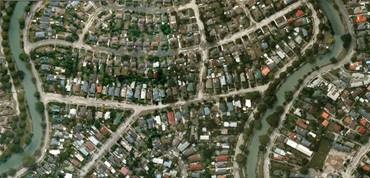Download the OESF 2019 Final Programme Overview
Field Trip
The field trip on Friday 06 September 2019 was included in the full forum registration*. The package included:
- Pick up from Rydges hotel
- Transport to the different stops
- Light lunch
- Transport back to Rydges hotel or the Christchurch airport.
Due to the interactive nature of the field trip advanced confirmation was required.
Stop 1: Bexley Wetlands and Christchurch Residential Red Zone (Ōtakaro Avon River Corridor )
Bexley Wetlands
The Bexley Wetland is of cultural importance Māori in Canterbury, as it was a source of mahinga kai (food and other resources). When European settlers arrived in 1850 Ōtautahi/Christchurch was covered in extensive wetlands. The estuary and river mouth of the Ōtakaro/Avon and Opawaho/Heathcote rivers is an area where freshwater and saltwater mix and provides resources that cater to abundant bird life, incorporating salt marsh, salt meadow, coastal bush and freshwater wetland areas.
The wastewater treatment plant oxidation ponds have also attracted birds, some of which have moved into the Wetlands area. A significant portion of the local community has for some time been concerned about, and active in, saving the unique habitats of Bexley Wetland. 12.5 hectares of Bexley Wetland are now an Ecological Heritage Site.
The earthquakes during 2010-2011 led to the ground in Christchurch experiencing liquefaction, a process where silt soils act like a liquid when under stress. In the Eastern suburns of Christchurch, 400,000 tonnes of silt rose to the surface. Due to this soil damage, the Government declared areas around the Avon River an uninhabitable ‘Red Zone’, and 7000 homes have been removed from an area of 600 hectares.
Tidal circulations in and out of the estuary have changed because the base of the estuary is now 70 cm higher than before the earthquakes and heavier (more dense) saltwater is retained in the estuary changing the environment for plants, birds, and all aquatic life.
Ōtakaro Avon River Corridor
What will happen to the land? There are now plans to plant an 11-km ‘Green spine’ as a nature corridor from the city to the seas following the river banks that feature walkways, biking tracks and wetland developments. Regenerate Christchurch, a government appointed board, states “We have an exciting, once-in-a-lifetime opportunity to create a legacy that will deliver benefits for Christchurch and New Zealand’s future generations.” The Council is considering 10 proposals for future land use, in consultation with public submissions.


Stop 2: Travis Wetlands (short wander)
Travis Wetland was purchased by developers in the 1985 to build homes on the site, however a petition and action by the community to retain the land as a valuable wetland succeeded in the courts. Travis Wetland is the last large freshwater wetland in Christchurch – an important habitat for native wetland plants and birds.
Fifty species of native and exotic birds now live in the wetland. Native species include pukeko, five native ducks: Scaup, Grey Teal, Shoveler, Paradise Shelduck, the Grey duck and the rare White heron. About half of Christchurch’s pukeko live here in winter – up to 700 birds, one of the largest concentrations in New Zealand. Many of them breed here, so Travis Wetland is a vital link in a network of green spaces and waterways that support bird life in Christchurch.
Gian native podocarp tree species (kahikatea, tōtara and matai) were planted in 2000 at an area known as the Millennium Forest as well as smaller native trees to provide floral and food resources for birds.

Stop 3: Radcliffe Road native reserve – part of STYX Living Laboratory
The Styx Living Laboratory Trust was set up in 2002 to realise Christchurch City Council’s Vision in The Styx – Develop a “Living Laboratory” that focuses on learning & research in the Styx River catchment. In particular, it emphasises community involvement through research and education to understand the river ecosystem, and use this knowledge to restore the river system.
At the Radcliffe Road site within the STYX, a rakau rongoā is being established. Rakau rongoā is a system of traditional Māori healing using native floral herbal preparations.
At the site, rongoā practitioners will discuss the social and cultural ecosystem service value of the tree species and we will help the rongoā by planting traditional healing species.

Stop 4: Willow Bank Wildlife Reserve (Zoo)
Willowbank is part of Operation Nest Egg, designed to give species a better chance of survival through captive hatching.
Willowbank is a New Zealand leader in conservation, with success in many national, Australasian and in-house breeding programmes focusing on New Zealand native and endangered species, as well as many rare and heritage breeds of farm stock.
Scientific research projects, and local partners including the Department of Conservation, the Styx River Living Laboratory, the Rare Breeds Society, the NZ Conservation Trust and the South Island Wildlife Hospital, are supported by and work alongside Willowbank. The reserve also hosts school visits for children to discuss and learn about New Zealand’s native heritage as part of the school curriculum.
Willowbank is home to many rare and endangered farm species, including:
- Arapawa Island goat
- Kune Kune pigs
- Auckland Island pigs
- Damara sheep
- Enderby Island rabbits
- Awassi sheep
- Karakul sheep
- Zebu cattle
These animals are part of a larger breeding programme between Willowbank and an offsite farm where the animals are rotated from display to pasture.
Thank you to our field trip coordinator: Alan Leckie, Cantabrian, forester, tree planter, environmental volunteer (Scion & Centre for Integrated Biowaste research).
*Day registration for the field trip only is also available.
Would your organisation like to sponsor the field trip, other participants or forum materials (e.g. bags, lanyards, speakers gifts)? For more information, or to discuss a sponsorship package tailored to you, contact the Forum organisers: oceaniaesforum@gmail.com


You must be logged in to post a comment.